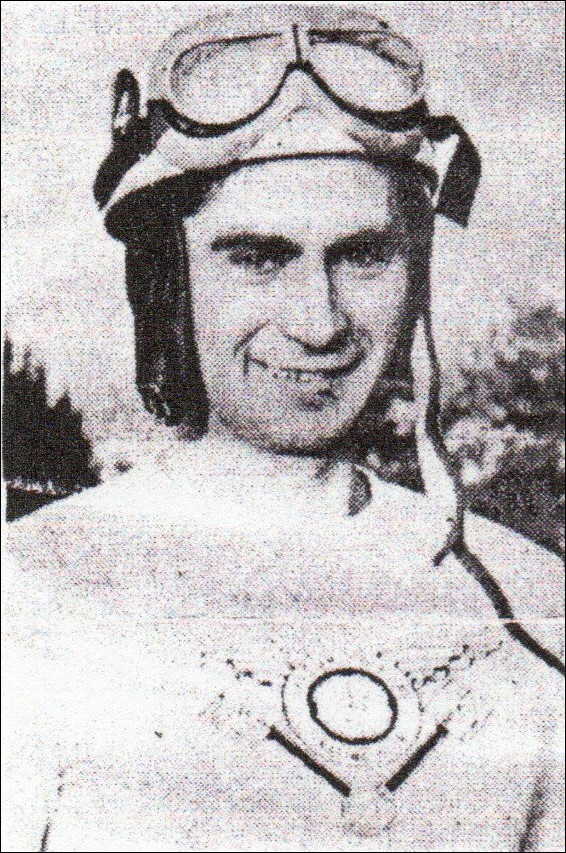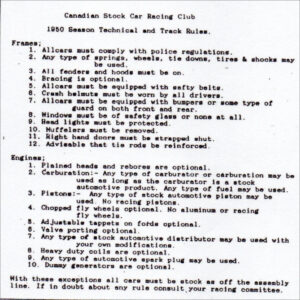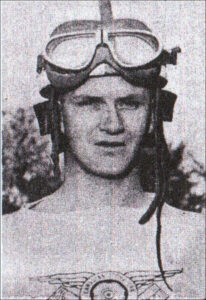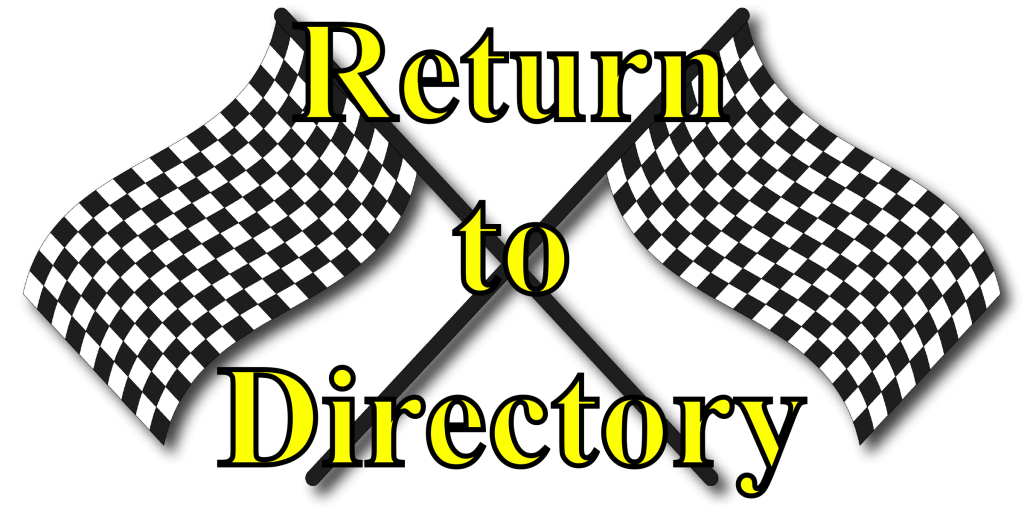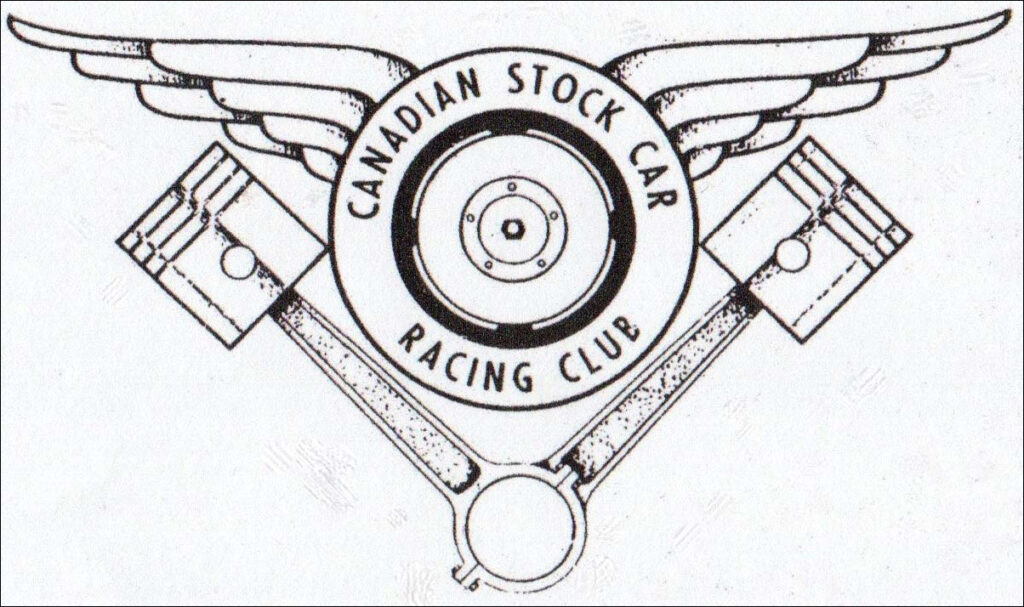
The Canadian Stock Car Racing Club wa s formed in late 1949 in order that the drivers at “Speedway” could present a united voice to the promoter.
1949 the Canadian Stock Car Racing Club
by Dave Boon
Published in “Old Autos” Monday May 19, 1997
When the first primitive stock cars appeared in organized races in Toronto at Pinecrest Speedway in 1948, there was little thought given by those early drivers as to whether there was any prize money to be won.
It is doubtful that Len Hurley, John McGiffin, Norm Mackereth, Phil Muccio or any other of those pioneer stock pilots were ever offered a penny from the then track management – the Toronto Racing Drivers Club – nor was it likely that they asked for anything. For those first exciting race events in which they competed in that inaugural season, I’m sure that they paid the same 50 cents admission fee as did the spectators.
What prize money that was paid, went to the sprint car owners.
In the beginning of the 1949 season almost the same situation existed. The stock cars and drivers, of which I was now one, were soon to become the principal attraction for the spectators. There was no doubt that the sprint car races,with such well known drivers as Hugh Darragh, Harry Eckert, Lloyd Shaw and Ron Knott were generally the best advertised, high profile events, and it was to them that the lion’s share of the prize money was both guaranteed and directed.
Nevertheless, dating from the first meet that season on Victoria Day May 24 – when the then small field of about eight stocks ran a few short heats between the sprint heats to keep the crowds interest – the stocks popularity grew. While the sprints were very fast and exciting, there were long lapses between their heats which was not appreciated by the crowd. The stocks on the other hand, were crowd pleasers but were not temperamental like like the sprints, they didn’t need push starts, and they could be on the grid for a “start” with little delay.
On June 15, the very first Wednesday evening twilight meet was scheduled, and now featured and advertised both stocks and sprints.
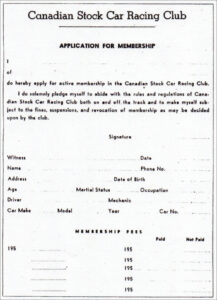
It wa s remarkable that some eight US drivers showed up for this Wednesda y event, as Toronto was a lengthy trip in that era for drivers who had to haul from Michigan or Ohio, solely for a mid-week evening race. That a crowd of only 2,000 showed up for that premium event was a disappointment to the promoter, and the sprints were never again to run on a twilight meet.
For the next two Wednesday meets only stock cars were featured, with Len Hurley and Gord Yates sharing the sports’ page headlines. In fact, Yates ’37 Ford went so fast that the rules committee obliged him to open the motor to determine if it complied to the regulations.
The stocks were to race regularly that summer except for some unclear reason, that for the month of August, there wa s but one race, a mixed meet, scheduled – on a Monday, the first of the month. The stock heat winners that day were – first, Len Hurley – second, Chick Brown – third, Tom Forbes.
There was a crowd of over 4,000 that August 1st and with an admission fee of $ 1 .00 and an extra 25 cents to sit in the stands, there should have been at least $2,000 in prize money to be shared amongst all we drivers, I doubt whether “stocks” saw $100 that day!
As the race season went on into September and October, we drivers became more aware and conscious that the promoter who was placing bigger and presumably more costly ads in the newspapers, and who was bringing in presentable crowds each meet, was paying out a miserly purse. “We” were not organised and had no idea or accounting as to what the “gate” might be nor what the day’s total prize money might or should be. We did know that there was no appearance money and that a win in a heat might bring in $4.00.
There was no action taken in respect to prize money by we drivers, until the racing season was over and we had some free time to act on the problem.
Initially we had a few meetings at Phil Muccio’s home to discuss what we should do to ensure that we were to receive a fair share of the gate receipts. We learned from the more experienced drivers, who had run on other tracks, that the gate receipts were normally shared between the track promoter and the competitors on a sixty/forty or thereabouts, basis.
We had no way individually, obliging Morden to open the books, so a suggestion was made to form a club so that we would have the numbers and the strength to deal with the problem.
We even invited the track’s owner, Charlie Greenly, to attend a formative meeting to give us a picture of the income that was being derived from “our” racing endeavours.
The group of us eventually decided to form a club, and the decision was made to call it the Canadian Stock Car Racing Club.
The annual membership fee was set at $5.00 and if I recall correctly, Phil Muccio was our first secretary and Mal Sinclair was our first president. Mal had a decorating business and was very artistic, he offered to design a logo for our new club. Within a week he presented us with a well designed drawing comprising a pair of wings, a race car wheel and a pair of con-rods with pistons. We were even soon to be a ble to purchase sweatshirts with the logo imprinted on them. I still have the “T” shirt, that I purchased in 1949 and it is now on loan to the Canadian Motor Racing Historical Society.
Since we now had a club, and had the majority of the stock car drivers and members, we decided to develop some rules and regulations. During the season of ’49 we had run a wide variety of cars and – would you believe, trucks. Gar Loughrey regularly ran a very competitive sedan delivery – a type of vehicle which has long since disappeared. A good percentage of the cars were convertibles or roadsters – which, of course, didn’t have roll bars and, in most cases, none of the cars even had seat belts.
For the upcoming season of 1950, the new rules didn’t include anything to specifically forbid roadsters, (or trucks) but it was hoped that none would appear.
The new rules, of which a facsimile appears in this article, recognized that the majority of the cars that were raced were generally also used as daily drivers, so the rules clearly stated that they had to be able to pass highway and police regulations.
In general, with few exceptions, the car bodies had to look and remain stock, and the engines could only be slightly altered.
Over the season of 1950 the “money” problem was never really resolved. “We” didn’t have a good enough organization to properly put enough pressure on the C.A.R.S. promoter Harley Morden to open his books.
C.A.R.S. did pay us our prize money in cash on the day of the race. I still have an empty envelope in my memorabilia from C.A.R.S., which in September 1950 contained the prize money for “D. Boon” – $4.00 – for a 4th place finish in the semi-final.
The ill feeling that was felt by many of us drivers, as a result of the perception of being short changed in prize money by C.A.R.S. was that when an alternative track was to open in 1951 in Toronto – Oakwood Stadium – there w as little loyalty felt towards Speedway Park. Prior to the commencement of the 1951 racing season, C.A.R.S. sent us all applications and appeals, (“and then threats of blacklisting”) to enter the upcoming events at Speedway Park.
However, the majority of us had long since made an unspoken decision to ignore anything to do with C.A.R.S. and went ahead to prepare our cars for Oakwood Stadium.
Speedway Park was to struggle through the season of 1951, and Harley Morden was quoted in a late season interview by the Toronto Star – “That of the four race promoters that ran stock car races in the Toronto area, there was only one – Oakwood Stadium – that did not suffer a loss”.
We, who did run at that season at Oakwood Stadium, had learned well from the 1 950 season, and when early in the season of ’51we perceived that we were not getting our fair share of the Oakwood Stadium gate, we got together and hired a lawyer, John Regan. We even went on strike to demand a 40% share of the gate.
We were not surprised w Cappy and Smith almost immediately found the extra prize money that we sought.
The Canadian Stock Car Racing Club lasted a few more years and I have no idea when its demise occurred. It was though, a breakthrough organization for all of us then young, unsophisticated drivers, and through it we learned that we had rights and that we could stand up for and gain our goals.

